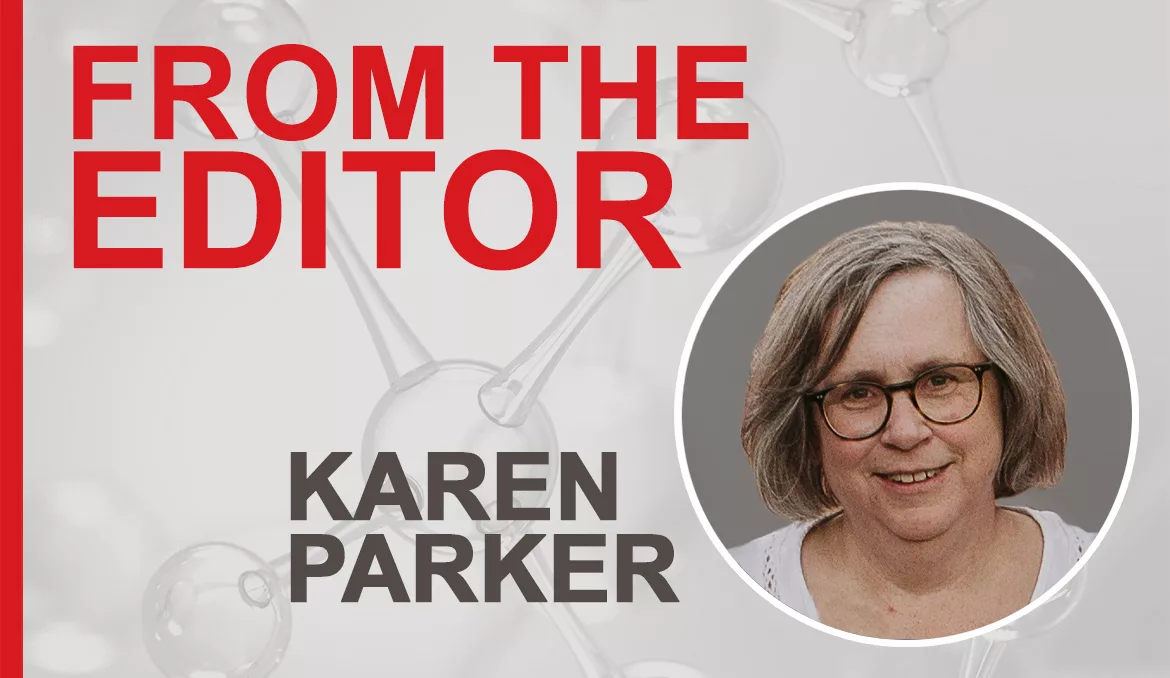From the Editor
A Different Approach to Material Design

It is mid-February in Southeast Michigan, and signs of change are popping up. The sun stays in the sky a bit longer every day, making an evening dog walk a little brighter. The chipmunks are out and about, reminding me who really owns my backyard. You can feel spring coming, and the change from the frozen darkness of December and January to the inevitable warmth of April and May feels glorious.
For some people, the need to have things changing around us is so important. I know people who, when given the chance to move to year-long warmth, will pass on the opportunity because the changing seasons suit them. The same can be said for materials science, as recent research out of the University of Chicago illustrates.
Scientists at the Pritzker School of Molecular Engineering at the University of Chicago have developed a plastic material with the ability to take on many forms. The discovery, published in the February issue of the journal Science, has application as humans explore harsher and less-predictable environments, such as the ocean and space, as well offering the possibility of a new tool to simplify plastic recycling. The researchers are calling this new material a “pluripotent plastic,” because like pluripotent stem cells, which can give rise to any type of adult cell in the human body, the plastic can take on many final forms.
“We believe, this is the first example of a synthetic material that exhibits pluripotent behavior,” said Stuart Rowan, the Barry L. MacLean Professor for Molecular Engineering Innovation and Enterprise at PME and senior author of the new work. “We believe that it paves the way toward a different way of thinking about material design.”
An article from the University of Chicago about the recently publish paper states, “the pluripotent material is made up of polymers containing ‘dynamic covalent bonds,’ which can break and re-form reversibly. Heating the material only to low temperatures (around 60 °C) allows the formation of more bonds, resulting in stiff/high strength materials at room temperature. These could be used in plastic utensils, among other things. Heating to higher temperatures (around 110 °C) results in fewer bonds being formed and, in turn, a more soft, extensible material that can be used for instance, as a pressure-sensitive adhesive.”
Graduate student Nicholas Boynton, who worked on the research, noted scientists’ surprise at the number of different mechanical properties they were able to get from a single feedstock material, including hard, high-strength material to flexible rubber-band-like material. And because the process can be reversed by adjusting temperature, the materials could possibly be employed for on-demand reuse materials in environments with few resources, such as Mars, as well as offering a different approach to plastic recycling, where there is no need to separate different plastics during the recycling process. The research team is now working to improve the range of mechanical properties of the “pluripotent plastic” to create materials that can replace current plastics and new materials with new functional properties.
“We want to reframe the way we think about designing materials,” said Rowan. “Instead of designing one material for one application, let’s flip that on its head and see if we can make one material that can be differentiated to be useful for many applications.”
As formulators of adhesives and sealants face the challenges presented by new regulatory and consumer demands, the ability to think differently, to adapt to change, becomes increasingly important. This month’s issue of ASI also offers a change from previous March issues. I have replaced the annual raw materials and chemicals roundtable article with an article that reviews the most recent new products offered by raw materials suppliers. I invite your feedback about the usefulness of this information. Or, let me know if you would like the roundtable article back next year. Reach out at Parkerk@Bnpmedia.Com.
I also encourage you to review our annual Raw Materials Handbook, which is a valuable industry resource. Also included in this issue are several articles about adhesives in the packaging industry and a review of the upcoming ASC Annual Convention and EXPO. This important industry event is coming up in April. Read about it and register today! I look forward to seeing you in person in April.
Looking for a reprint of this article?
From high-res PDFs to custom plaques, order your copy today!




